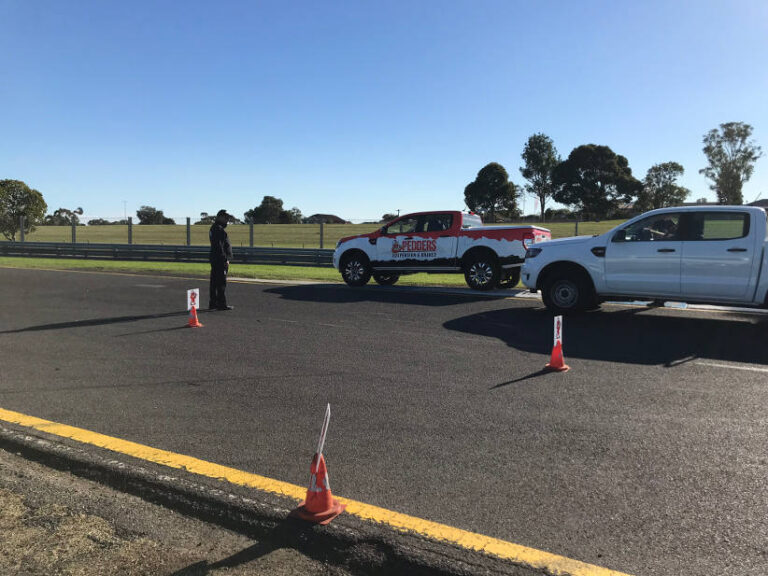– By Marc Sibbald –
It’s hard to be believe with so many super models on show that the star of the day was the Melbourne weather – it was glorious! And it matched the enthusiasm and excitement of the attendees at the Fleet Safety Field Day (sponsored by Pedders) being held at Sandown Raceway in Melbourne this year as part of the 2019 Australasian Fleet Conference and Exhibition.
There are many vehicle launches and drive days on a Fleet Manager’s calendar, so some may have decided to give this one a miss because the topics were safety and load carrying. I’m glad I didn’t because it one of the most informative and well organised days that I have attended.
I was greeted by Mace Hartley, AfMA Executive Director, at the registration desk and as I grabbed my lanyard the sound of squealing tyres filled my eardrums. This would normally indicate that the hot laps have started and an internal combustion engine is being revved to the redline against its will.
As I turned, I saw a Hyundai Kona spinning out of control on a skid pan to demonstrate what happens with the stability control turned off, and a soundless convoy of electric and hydrogen powered vehicles passed by filled with the eager participants. These were the beauties on display.
The day was organised into several activities:
- EV and hydrogen drive experience – 14 models
- The AEB and ABS split surface demonstration
- Impact of Weight
Pedders were the main sponsor of the day and reached out to AfMA after hiring the track for five days to conduct training and test drives for their 120+ store owners and staff.
Load is a major risk factor for fleets for several reasons. Many drivers and organisations don’t understand a vehicle’s load carrying limitations because of technical terms like Tare, GVM and GCM. Also, drivers don’t know how the impact of weight will change the vehicle’s handling characteristics during harsh braking or cornering.
The Impact of Weight session allowed Fleet Managers to drive the same vehicle in three different states of load and suspension settings to experience how the handling changes; and how their reactions can alter the outcome in different driving conditions.
Pedders set up four stations with different vehicles in each one. At the first activity, which was straight line braking, I drove a Ford Ranger. Than a Holden Colorado and Toyota Hiace to experience braking in a corner. Followed by a Toyota Hilux in a swerve test, and then the VW Amarok through a slalom.
The first run during each exercise was in a standard vehicle with no modifications to the manufacturer’s suspension. The second run was in a vehicle with the same suspension but loaded with 400kg. The third pass was in a loaded vehicle with a Pedders suspension and brake upgrade.
It wasn’t hard to feel the difference in each vehicle and the improvements with a suspension and brake upgrade were significant. In the final run the vehicle behaved so much better that Pedders could have taken orders on the day from several Fleet Managers.
A discussion in my group developed about the cost and suitability to upgrade every fleet vehicle. The type of load and carrying frequency were identified as key criteria in making the decision. At this point a Fleet Manager asked, “How do I know how much weight they are carrying?”, and the discussion went silent (because no one really knew what their drivers were carrying and how much it weighed). The Pedders team ended the awkward silence by mentioning that each one of their stores had the ability to weigh a vehicle to help determine if an upgrade was needed – it was a light bulb moment.






